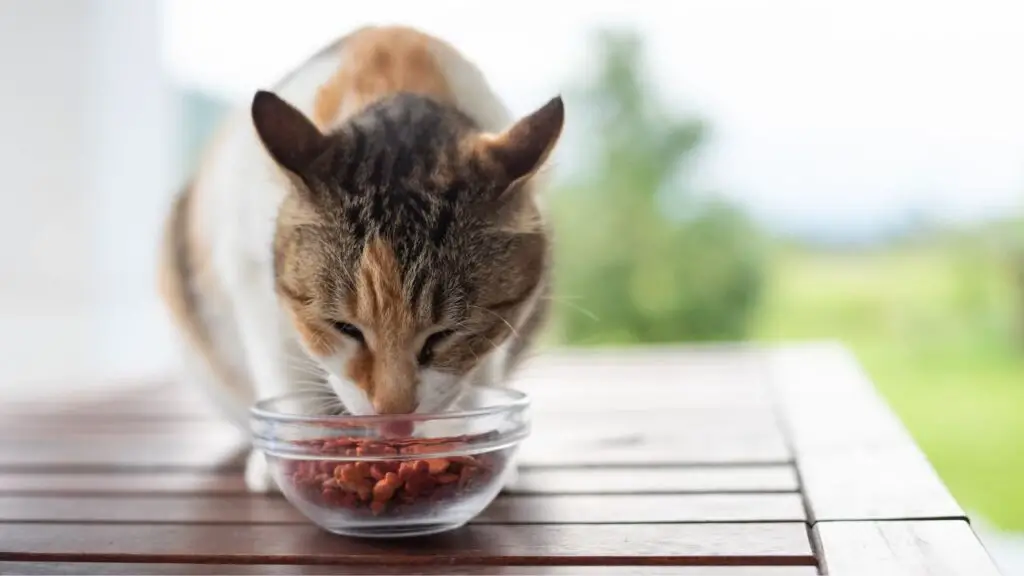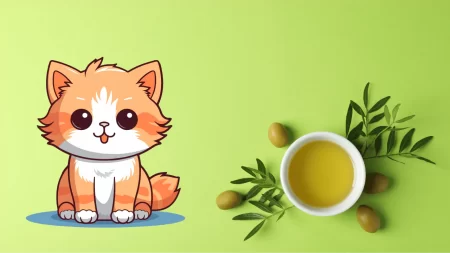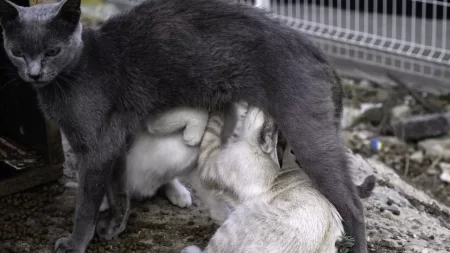Nutrition holds immense significance for your cat’s health. A balanced diet aids in maintaining optimal weight, imparting a glossy coat, and strengthening teeth and gums.
Additionally, it prevents potential diseases like obesity, diabetes, and kidney disease.
Here are some key points to remember while feeding your cat:
- Cats, being obligate carnivores, require meat for survival. Their diet should include at least 25% of protein.
- Essential nutrients such as taurine, vitamin A, and vitamin B12, found solely in animal products, must form part of a cat’s diet.
- Abstain from feeding your cat an excessive amount of carbohydrates. Carbohydrates, not a requisite part of their diet, could instigate weight gain.
In case of doubt about what to feed your cat, seek advice from a veterinarian. They can guide you in preparing a diet that suits your cat’s distinct needs.
Here’s a handy guide for ensuring a healthy diet for your cat:
- Provide high-quality cat food specifically designed to cater to their needs.
- Refrain from offering table scraps to your cat. These are typically loaded with fats and calories, causing weight gain.
- Always ensure your cat has access to fresh, clean water.
- If you opt for wet food, go for canned rather than pouch. The former is more enriched with nutrients.
- When feeding dry food, ensure it is high-quality kibble that isn’t overly dry. Extremely dry food could harm your cat’s teeth and gums.
Following to these guidelines can contribute significantly to your cat’s longevity and overall well-being.
What are the signs of an unhealthy cat diet?
Some signs of an unhealthy cat diet are:
- Vomiting more than occasionally
- Loss of appetite or increased appetite
- Diarrhea or constipation
- Weight loss or weight gain
- Lethargy or low energy level
- Increased thirst or urination
- Dry, scaly skin, missing patches of fur, or dull coat
- Brittle, overgrown, or infected claws
- Bad breath, tartar, plaque, or gum disease
What are some common mistakes people make when feeding their cats?
Common mistakes when feeding cats include:
- Overfeeding or free feeding, leads to obesity and related health problems.
- Providing only dry food or neglecting water intake, resulting in dehydration and urinary tract issues.
- Opting for a plant-based or unbalanced homemade diet, causing nutritional deficiencies and health complications.
- Failing to consult a veterinarian regarding the cat’s specific nutritional needs, results in inappropriate feeding, overfeeding, or underfeeding based on the cat’s age, size, activity level, and health condition.
- Offering toxic or harmful human foods like chocolate, onions, garlic, grapes, raisins, alcohol, caffeine, xylitol, and others.
What are some ways to encourage my cat to drink more water?
Some ways to encourage your cat to drink more water are:
- Offering wet food or adding water to dry food.
- Offering a variety of bowls and glasses.
- Placing the bowls throughout the house.
- Keeping the bowls and water clean.
- Using drinking fountains.
- Adding flavor to your cat’s water.
- Encouraging your cat’s drinking quirks.
What are some tips for feeding a cat with a sensitive stomach?
Some tips for feeding a cat with a sensitive stomach are:
- Visit your veterinarian to rule out any underlying illness or health condition
- Consider a diet trial to find a food that suits your cat’s nutritional needs and preferences
- Choose a high-quality food that is highly digestible and contains no irritating ingredients
- Offer wet food or add water to dry food
- Feed small and frequent meals to avoid overloading
- Avoid sudden changes to your cat’s diet
- Avoid human foods
What are some tips for feeding a cat with allergies?
Here are some tips for feeding a cat with allergies:
- Consult with your veterinarian.
- Try a limited-ingredient diet.
- Try a hydrolyzed protein diet
- Add probiotics to your cat’s diet
- Avoid giving your cat table scraps
- Make sure your cat has access to fresh, clean water at all times
What are some tips for feeding a cat with kidney disease?
Here are some tips for feeding a cat with kidney disease:
- Consult with your veterinarian.
- Feed your cat a low-protein diet.
- Feed your cat a high-fiber diet.
- Feed your cat a diet that is low in phosphorus.
- Feed your cat a diet that is high in moisture.
- Avoid giving your cat table scraps.
- Make sure your cat has access to fresh, clean water at all times.
- Look for food that contains omega-3 fatty acids and antioxidants.
What are some tips for feeding a cat with diabetes?
Here are some tips for feeding a cat with diabetes:
- Consult with your veterinarian.
- Feed your cat a high-fiber diet.
- Feed your cat a diet that is low in carbohydrates.
- Feed your cat a diet that is high in protein.
- Avoid giving your cat table scraps.
- Make sure your cat has access to fresh, clean water at all times.
What are some tips for feeding a cat with hyperthyroidism?
Some tips for feeding a cat with hyperthyroidism are:
- Feed your cat protein-rich, low-carbohydrate food that is also low in iodine and phosphate.
- Opt for food with high-quality animal-based protein like chicken, turkey, lamb, pork, or pate.
- Seek your vet’s advice for food recommendations and feeding guidelines, including portion sizes and frequency.
- Provide your cat with a measured quantity of food twice daily or as per your vet’s instructions.







